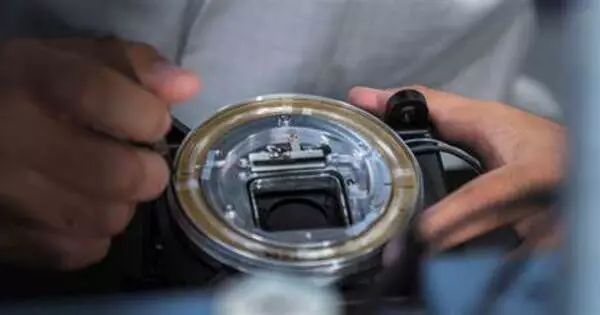A fibre-optic gyroscope (FOG) detects changes in orientation by employing the Sagnac effect, similar to a mechanical gyroscope. It is a sort of gyroscope that measures rotation via light interference. However, its operation is based on the interference of light that has gone through a coil of optical fiber that can be as long as 5 kilometers (3 miles).
It is a very accurate and dependable gadget that is utilized in a variety of applications such as navigation, aerospace, and defense systems. Unlike typical mechanical gyroscopes, which rely on spinning wheels or moving parts, FOGs work on the principles of light interference. FOGs have found applications in inertial navigation systems, robotics, autonomous vehicles, and many other fields where precise measurement of rotation is necessary.
Operation
The Sagnac effect, which creates a phase shift between two beams of light traveling in opposite directions as the entire system is rotated, is the key principle of a FOG. The angular velocity (rate of rotation) determines the phase shift. The FOG can calculate the rate and direction of rotation by sensing the phase shift and knowing the length of the optical fiber coil.
Two laser beams are put into the same fiber in opposite directions. The beam traveling against the rotation has a somewhat shorter route delay than the other beam due to the Sagnac effect. The ensuing differential phase shift is measured using interferometry, converting one component of the angular velocity into a photometric shift of the interference pattern.
Advantages
Fiber-optic gyroscopes provide a number of advantages, including high precision, longevity, and resistance to electromagnetic interference. They are extensively employed in aviation and ship navigation systems, as well as in various consumer gadgets such as smartphones and cameras, to give accurate motion sensing.
Because of its absence of cross-axis sensitivity to vibration, acceleration, and shock, a FOG gives exceptionally exact rotational rate information. The FOG, unlike the traditional spinning-mass or resonant/mechanical gyroscopes, has no moving parts and does not rely on inertial resistance to movement. As a result, the FOG is an effective substitute for a mechanical gyroscope. FOGs are employed in high-performance space applications and military inertial navigation systems due to their inherent reliability and long lifetime.
The FOG typically shows a higher resolution than a ring laser gyroscope.
FOGs are implemented in both open-loop and closed-loop configurations.
Disadvantages
FOGs, like all other gyroscope technologies, may require initial calibration (determining which indicator corresponds to zero angular velocity). Some FOG designs are susceptible to vibrations. The impact is lessened when linked with multiple-axis FOG and accelerometers and hybridized with Global Navigation Satellite System (GNSS) data, making FOG systems ideal for high-stress settings, such as gun pointing systems for 105mm and 155mm howitzers.














